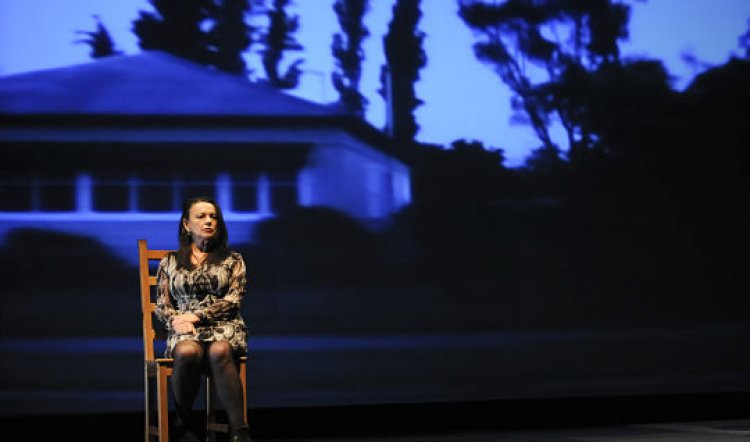
THE DISAPPEARANCES PROJECT
THE DISAPPEARANCES PROJECT, version 1.0 at Carriageworks, April 22-May 7 2011. An open access (free) event. Photos: Heidrun Lohr.
In the program notes, David Williams of version 1.0 writes that “86% of the 30,000 persons reported missing each year are found within seven days.” But, he also says, “Those statistics leave a great many people unfound.” It sure does: the families, friends, community and colleagues of 4200 people are left bereft and bewildered – some times for the rest of their lives. And, Williams also writes, “recent research estimates each missing person directly affects the lives of 12 others”. Which means the annual count of the left behind numbers a heart-rending and almost incomprehensible 50,400 bereft and bewildered.
We read about or watch on the news items about the “missing” – especially if they’re media-juicy (young, pretty, handsome, dramatic circumstances etc). But aside from a momentary glimpse of a weeping or distraught parent or partner, those who wait and hope are pretty much ignored. It’s probably because trying to understand what they feel and go through is virtually impossible. Performer Irving Gregory says at one point, that he is in a kind of limbo, “what was reality and what wasn’t?” Later in the piece, co-actor Yana Taylor says, “The worst answer is better than no answer at all.” And the truth of “disappearance” lies somewhere in between; it’s not something anyone can fully understand.
Unfortunately, it quickly becomes obvious from this two-hander verbatim drama-doco that neither the law, social services nor other authorities understand or even care about the impact of a missing person on their nearest and possibly dearest. More than that, the law in particular is constructed to make life as painful as possible for those left behind – such are the strictures of privacy legislation.
The Disappearances Project is deceptively simple: two wooden chairs stand in front of a large blank screen, the rest is a void. Loneliness is obvious and instantly evoked. Chilly lighting and a blackout mean Gregory and Taylor are suddenly there but lost in the shadows of unidentifiable sounds, and shapes that flit slowly across the screen. (Composer Paul Prestipino, cinematographer Sean Bacon, directed by Taylor.)
Each takes it in turn to speak: fragments of thoughts and feelings gathered in interviews with the left behind. Neither looks at the other, they are extremely alone. Their delivery is matter-of-fact, however, there is nothing lugubrious or melodramatic about the delivery and that matters a lot. It would be unbearably patronising and wrong to inject “feeling” into these simple accounts of perplexed grief. The voices are hypnotic and insistent so when the images on the screen begin to coalesce into an identifiable – but anonymous – streetscape, the eyes are drawn to it and another search and puzzle begins.

While the two voices are relating the weird anguish of dealing with life with(out) a missing person, it’s impossible not to be wondering and looking for something – anything – to identify and anchor oneself in the slowly passing images of the late-night, pre-dawn streets of an Australian country town. There are brightly lit pubs, cafes, shops, tyre marts, petrol stations, darkened rows of houses, empty car parks, waste ground, empty lots, warehouses, factories, parks. The need to know and the need to see a human being in the deserted streets becomes obsessive. When a blurred direction sign gives a clue and confirms suspicions of where this ghost town might be, the sense of relief is physical. And when a lone woman is spotted on the pavement outside a pub and other human figures are briefly visible in another pub, it’s some kind of confirmation of being. And then you suddenly think about what it must be like to spend years – a lifetime – searching for clues. Agony.
As well as being a truly fascinating hour, The Disappearances Project also casts a bright spotlight on a situation that is an everyday nightmare for 50,400 more Australians every year. And because social services and mental health care are so inadequate or under-funded (or both), the inflexibility of the law becomes an insurmountable barrier. Indifference at best and cruelty at worst seem to be what’s out there for people who are already enduring a predicament you wouldn’t wish on your worst enemy.
Illuminating, immensely moving theatre.



